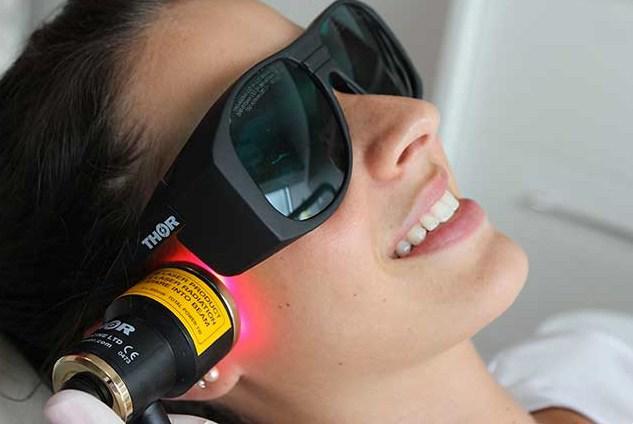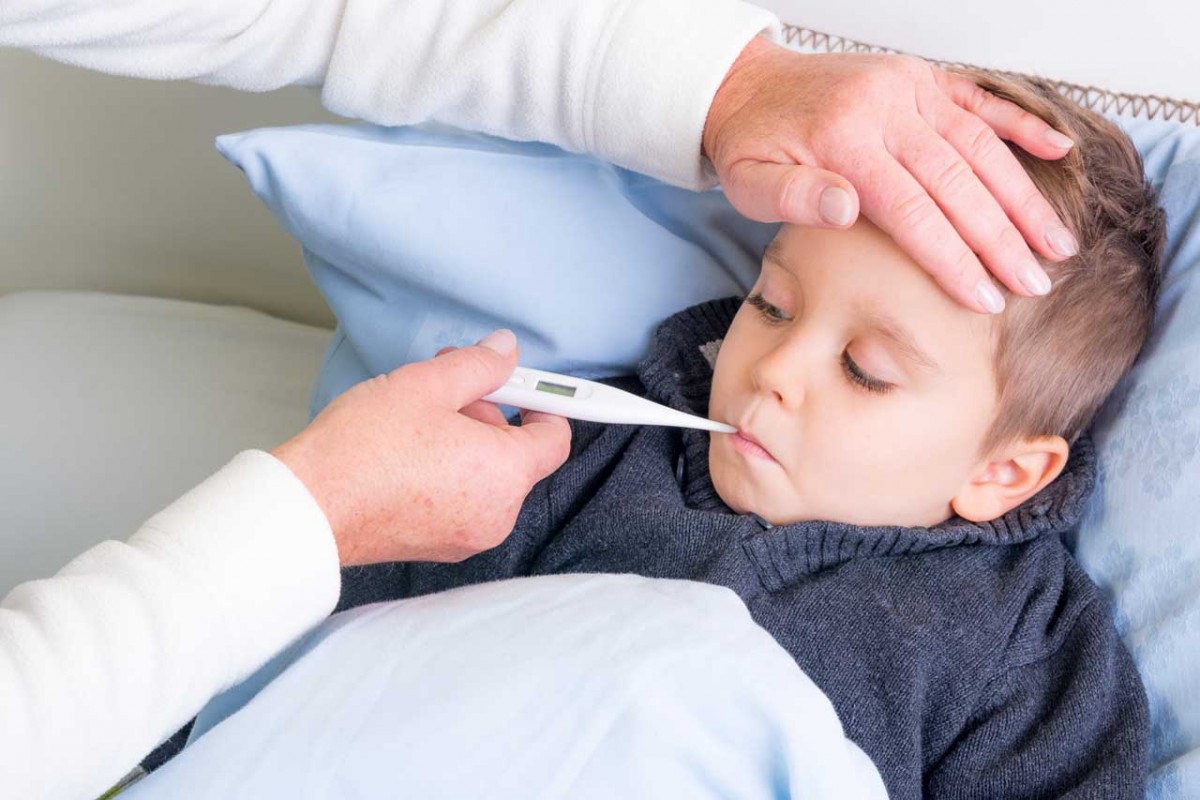ABSTRACT
Background: The purpose of this study was to compare postoperative recovery over 14 days in children receiving tonsillectomy using a bipolar radiofrequency-based plasma (COBLATION®) device to cold dissection. Methods: Pediatric patients (n=42) aged 5-16 years old with chronic tonsillitis had tonsillectomy using cold dissection with suture ligatures or a plasma device (Evac 70, ArthroCare Corp, Sunnyvale, CA). Pain intensity on the first day, use of analgesics, type of diet, and days of pain, fever, nausea, and absence from school were determined. Groups were compared using time-to-event (Kaplan-Meier) curves and statistically evaluated using the Breslow (generalized Wilcoxon) test. Results: Children undergoing the plasma tonsillectomy reported significantly less pain on the first postoperative day (1.2±0.9 vs 3.5±1.5, p<0.001), fewer pain days (4.8±1.5 vs 9.4±1.2, p<0.001), ceased use of pain medication (2.6±1.3 vs 4.5±1.3, p<0.001) and liquid diet (5.1±1.4 vs 8.5±2.1, p<0.001) sooner, and lost fewer school days (5.3±1.7 vs 8.9±1.5, p<0.001). Conclusion: After completing this study, we adopted plasma tonsillectomy for the majority of our cases. Benefits of the plasma device include ability to both excise tissue and coagulate bleeding vessels using the same device and improving quality of postoperative recovery over cold dissection with suture ligatures.
Keywords: tonsillectomy, radiofrequency, cold dissection, Coblation
INTRODUCTION
Over the last few years, several different techniques for performing tonsillectomy have been proposed as attempts to lower the inherent morbidity of this surgery. The cold dissection procedure was the standard approach used before the ‘Bovie’ electrocautery device was introduced. Electrosurgical methods provided an improved means over cold dissection for controlling intraoperative bleeding and were rapidly adopted as the procedure of choice. During subsequent years however, several clinical studies showed that the electrosurgical tonsillectomy was associated with more painful and extended postoperative recovery 1-3 and increased risk of secondary bleeds than cold dissection 4, 5. Hence, new devices and methods for performing tonsillectomy continued to be developed and studied.
When radiofrequency-based plasma devices were introduced for tonsillectomy, our hospital still used cold dissection routinely. Investigators comparing plasma devices to electrocautery reported that their use was associated with significantly less damage to tissue underlying the treatment zone 6 and potentially better quality postoperative recovery than electrocautery 7-10. We never adopted the electrocautery technique since we did not like the residue left behind with the procedure and were averse to extending the postoperative recovery of our patients. We were intrigued by the early research reports on the plasma device and were open to trying a method that would allow the potential for improved recovery over that permitted by electrocautery, while providing a mechanism to control intraoperative bleeding without requiring use of sutures. The aim of this study was to evaluate the feasibility of using the plasma device in our clinic for tonsillectomy. Our primary objective was to assess the 14-day postoperative recovery period in pediatric patients who underwent tonsillectomy using the plasma device compared to patients who received cold dissection with suture ligatures.
MATERIALS AND METHODS
Patients and Study Design
The study protocol received approval from the Ethics Committee at the S. Eugenio Hospital in Rome, Italy. The study group consisted of pediatric patients aged 5-16 years old who presented with symptoms consistent with chronic tonsillitis. After undergoing training to use the plasma device and performing ten cases, subsequently presenting patients were assigned to receive tonsillectomy using either the plasma device or cold dissection with suture ligatures; patients were assigned to treatment as they were scheduled for surgery, alternating between assignment to one surgical approach and then the other through our first 21 plasma cases. Both surgical groups were statistically similar in age and gender, and were similarly distributed in terms of tonsil size and prevalence of associated respiratory conditions (Table 1). No patient received concurrent adenoidectomy. The same surgical team performed all procedures between September and December 2004.
Cold Dissection Tonsillectomy
The cold dissection tonsillectomy was performed as was standard for our clinic. Using an Allis forceps, the tonsil was retracted medially, an incision was made at the anterior pillar near the upper pole of the tonsil. The tonsil was then excised using a metal snare. Hemostasis was achieved by closing the wound using “slipknot” open ligatures with resorbable suture (Figure 1).
Radiofrequency-based Plasma Tonsillectomy
The plasma tonsillectomy was performed using the Evac 70 Wand (ArthroCare Corporation, Sunnyvale, CA). This device is designed for ablation and dissection of soft tissue and has integrated suction to facilitate removal of debris and variable coagulation settings to allow hemostasis. This technology functions using radiofrequency energy to excite the electrolytes in a conductive medium, such as saline solution, creating a precisely focused plasma. The energized particles in the plasma have sufficient energy to break molecular bonds 11-13, excising or dissolving soft tissue at relatively low temperatures (typically 40C to 70C). The same device was used to excise the tonsillar tissue and to perform hemostasis when required.
Using an Allis forceps, the tonsil was retracted inferomedially and an incision was made at the anterior portion of the tonsil pillar. Care was taken to keep the dissection within the peritonsillar space and avoid penetrating the tonsil capsule. Once the tonsil plane was identified, the tip of the device was swept gently over the tonsillar tissue in a superior to inferior direction to remove it. Minimal pressure was applied, since this aided in dissection of tissue and decreased the likelihood of excised tissue fragments clogging the device. While completing the tonsil excision, bleeding was controlled by switching to the coagulation setting and pressing the device tip directly onto the bleeder for 2-3 seconds. After achieving hemostasis, the tonsil ablation was resumed. The fossa was completely cleared of tonsillar tissue while preserving the capsular plane and pillar (Figure 2).
Clinical Outcomes Measures
After surgery, all patients and parents were given a postoperative recovery diary to complete daily for 14 days; parents were asked to complete the form at home along with their children. The symptoms and pain parameters collected during the 14-day period included use of analgesics (paracetamol), diet type (e.g. liquid, solid) the child had followed that day, absenteeism from school, and presence of pain, fever (>37), and nausea. The parents recorded diary measures daily using a ‘yes’ or ‘no’ response. Pain intensity on the first day was graded using a 5-cm visual analogue scale, where ‘0’ represented ‘no pain’ and ‘5’ represented ‘maximum pain’. Parents were also asked to record occurrence of any bleeding episodes during this period and to call the office if the episode was worrisome.
Statistical Analysis
Inferences about means from continuous data were based on standard parametric statistics. Comparisons based on non-ordered categorical data were evaluated using the chi-square test or Fisher’s exact test and ordered categorical data were examined using the Mann-Whitney U two-sample rank test. Surgical groups were compared using time-to-event (Kaplan-Meier) curves, which were statistically evaluated using the Breslow (generalized Wilcoxon) test. Two-tailed P<0.05 were considered statistically significant. Statistical analyses were performed using the SPSS for Windows, version 14.0, software.
RESULTS
Surgery time ranged from 25-30 minutes for cold dissection and 30-35 minutes for the plasma device. When performing the tonsillectomy using cold dissection, the procedure required 12-15 surgical instruments and three suture packs. In contrast, with the plasma device, we used three or four surgical instruments, including the Allis and/or Blumke forceps, pillar retractor, and Kelly forceps. Intra-operative bleeding during the plasma procedure tended to be half (~10 ml per case) of what we generally experienced using cold dissection (~20-25 ml per case).
No abnormal findings were observed postoperatively in any case and physical exam findings for both treatment groups were similar. Patients in both groups reported some minor sputum bleeding when sneezing or coughing. No patient experienced a postoperative bleeding episode requiring a clinic visit or readmission.
Children undergoing the plasma tonsillectomy reported significantly less pain on the first postoperative day compared to children receiving cold dissection (Table 2); a pain score of ‘1’ or ‘0’ was reported by 14 (67%) plasma patients and 3 (14%) cold dissection patients. The mean (± SD) number of pain days reported by plasma children was 4.8±1.5 days compared to 9.4±1.2 days for cold dissection children (Figure 3). The patients receiving the plasma tonsillectomy also ceased use of analgesics sooner (Figure 4), stopped liquid diet sooner (Figure 5), and lost fewer school days (Figure 6) than cold dissection patients. Tonsillectomy groups did not differ significantly in number of days having fever or in number of days with nausea.
A significant linear relationship was detected between pain days and use of analgesics (Pearson correlation = 0.422; p=0.005), pain days and lost school days (Pearson correlation = 0.650; p<0.001), and pain days and days of liquid diet (Pearson correlation = 0.811; p<0.001).
DISCUSSION
In our study, children who underwent the plasma tonsillectomy reported freedom from pain, ceased liquid-only diet, and returned to school significantly more quickly than children who received cold dissection. After finishing this study, we completely switched to using the plasma device for performing tonsillectomy. Several past studies have shown the potential for significantly improved recovery with the plasma tonsillectomy over electrocautery 7-10, 14 but research comparisons of the plasma tonsillectomy and cold dissection are more limited in number. In a prospective, randomized, single-blind study conducted at UCLA, Shapiro and colleagues compared the intraoperative efficiency and postoperative recovery between cold dissection adenotonsillectomy (CDA) and Coblation-assisted adenotonsillectomy (CAA). It was shown that CAA offers better operative speed and intraoperative hemostasis as compared with CDA. However, CAA does not result in lower postoperative pain scores or recoveries despite these intraoperative advantages.15 Polites and colleagues observed that adult patients who received Coblation tonsillectomy on one side and conventional cold steel tonsillectomy on the other side reported that the Coblation side was significantly less painful on postoperative days 1, 2, and 3 than the cold dissection side 16. Zhong et al reported significantly quicker return to normal diet and significantly reduced pain with the plasma tonsillectomy compared to blunt dissection 17. In contrast, Philpott and colleagues evaluated postoperative pain, otalgia, swallowing and analgesia use at selected time points over 14 days and showed no significant benefits for plasma tonsillectomy over cold dissection in adults 18. However, the investigators did not clearly describe the cold dissection technique used nor did they specify the method used to control intra-operative bleeding.
The practice of using electrocautery for hemostasis after removing the tonsils using cold dissection is likely to increase recovery time over cold dissection with suture closing. The cold dissection technique is associated with less histologic damage to surrounding tissue than electrocautery 19. This may help explain why cold dissection patients generally have a less painful postoperative recovery than those who undergo electrocautery tonsillectomy 1-3. Conventional electrocautery systems ablate or coagulate tissue by applying a voltage across the tissue to be treated. This voltage difference causes an arc to form across the physical gap between the active electrode and the target tissue. Usually, this gap is filled with an electrically insulating gas (air, or carbon dioxide in laparoscopic procedures) or an electrically non-conductive liquid (distilled water, or glycine, etc.). The temperature of this spark has been ported 20 to be over 1600°C. In contrast, plasma devices use a lower voltage Radio Frequency signal (100-350 Volts at 100-500 kHz), which is applied through an electrically conductive medium, usually water based. In the ionized vapor layer formed around the electrode, the low temperate (40-90°C) plasma contains very chemically active radicals. These radicals have the ability to chemically disintegrate tissue 13. This activity is a chemical etching process with some heat dissipated as a controlled by-product allowing control of hemostasis, as opposed to conventional electrocautery, which is a purely thermally driven process.
The reason that we observed less pain and faster recovery in the plasma tonsillectomy patients compared to cold dissection patients may have been because surrounding tissue is less traumatized using the plasma device. During cold dissection, the tissue around the treatment site is manipulated using forceps and other instruments; in addition, suturing may be associated with localized pain. In contrast, when using the plasma device, the tonsil is excised without grasping, pulling, or tearing the adjacent tissue.
Increased risk of delayed postoperative bleeding has been previously reported in the literature as a significant problem when using a plasma device 21. During this study we had no secondary re-bleed cases, however the relatively small sample size used in this study does not allow us to conclude that it is not a risk. Up to the present time, we have performed over 300 plasma tonsillectomy cases and have observed approximately 8% re-bleed rate in patients who received plasma tonsillectomy compared to 5% re-bleed rate in cold dissection patients. We feel that the plasma device may be associated with a slightly higher re-bleed rate than cold dissection but as the literature suggests, it may not be any higher than it is when using electrocautery. In cold dissection cases, we cut less and dissect more; therefore we feel there may be less risk of subsequent bleeding.
In our experience (>300 cases), we have found the plasma technology sufficient for performing intraoperative hemostasis in the majority of cases (~99/100). In the three cases requiring additional hemostasis, we were able to use suture ties successfully. However, we suggest that the surgeon be proficient with at least one other surgical technique when using the plasma device (e.g. dissection and haemostasis with ligatures, stitches, or electrocautery) in order to be able to complete any procedure where an unexpected event may occur, such as massive hemorrhage or device failure. When using this device, we found it beneficial to adopt some of the same surgical pearls we used with cold dissection, including paying particular attention to performing spot hemostasis as necessary while removing the tonsil, preserving the capsular plane and pillar, and avoiding leaving tonsillar tissue behind. Proceeding in a meticulous fashion such as this allowed us to maintain a clean operative field and avoid carrying out extensive hemostasis at the end of the procedure. We used the plasma device to conduct hemostasis and therefore, did not need to use either sutures or electrocautery. However, in order to get effective hemostasis with the plasma device, we found it necessary to ensure that the entire tonsillar fossa was covered in saline solution before gently brushing the device over the bleeder.
Compared to cold dissection, the most significant disadvantages we found with the plasma device were the need to go through a learning curve, although it was relatively short, and the expense of the wand. The surgeon must have the patience to learn the proper technique, which requires performing at least ten procedures under the guidance of a colleague already skilled with using the device. In addition, this tool is substantially more costly than that used to perform cold dissection. However, we found that the total number of instruments required for performing the procedure when using the plasma device was substantially less than the number required for cold dissection. It may be valuable to conduct a formal cost effectiveness study to evaluate the overall costs of using this device for tonsillectomy.
The weaknesses of our study included relatively small sample size, lack of non-biased random assignment, and non-blinded subjects and investigators. In this study, despite the small sample size, significant differences in variables associated with quality of postoperative recovery were observed. This suggests that including more patients in the study was not necessary since it appeared that we had adequate study power to detect significant differences between groups. Although we did not use a conventional approach to randomly assign patients to treatment, our treatment groups had statistically similar demographics. Our results may have been biased in some fashion due to this lack of random assignment but this would likely have been reflected by a difference in age, gender, or presenting pathology between treatment groups. In addition, the lack of patient blinding may also have biased our results since the primary outcomes were generated using self-reports from the patients and parents. Patients and parents who knew that the plasma tonsillectomy approach was newer than the cold dissection technique may have provided feedback that reflected feelings that they had received a superior procedure; these feelings could have also been further supported by the non-blinded staff members. Therefore, a larger double-blind randomized controlled study comparing these two surgical approaches in the pediatric population would be valuable.
CONCLUSION
After completing this study, we adopted the plasma device for performing tonsillectomy in the majority of our cases. However, we feel that conducting a tonsillectomy using this procedure should not be approached by simply using the same technique as would be followed when doing any other more conventional procedure; it should be considered a completely new surgical method. After appropriate training, the plasma tonsillectomy represents an innovation that provides benefits for both the surgeon and patient, including having the ability to both excise tissue and coagulate bleeding vessels with the same device and improving quality of postoperative recovery over the cold dissection technique.
Acknowledgements
The authors would like to thank Debby Holmes-Higgin, MS, MPH for assistance with the statistical analyses and manuscript editing.
Reference List
(1) Wexler DB. Recovery after tonsillectomy: electrodissection vs. sharp dissection techniques. Otolaryngol Head Neck Surg. 1996 Apr;114(4):576-581.
(2) MacGregor FB, Albert DM, Bhattacharyya AK. Post-operative morbidity following paediatric tonsillectomy; a comparison of bipolar diathermy dissection and blunt dissection. Int J Pediatr Otorhinolaryngol. 1995 Jan;31(1):1-6.
(3) Nunez DA, Provan J, Crawford M. Postoperative tonsillectomy pain in pediatric patients: electrocautery (hot) vs cold dissection and snare tonsillectomy–a randomized trial. Arch Otolaryngol Head Neck Surg. 2000 Jul;126(7):837-841.
(4) Mowatt G, Cook JA, Fraser C, McKerrow WS, Burr JM. Systematic review of the safety of electrosurgery for tonsillectomy. Clin Otolaryngol. 2006 Apr;31(2):95-102.
(5) Lee MS, Montague ML, Hussain SS. Post-tonsillectomy hemorrhage: cold versus hot dissection. Otolaryngol Head Neck Surg. 2004 Dec;131(6):833-836.
(6) Chinpairoj S, Feldman MD, Saunders JC, Thaler ER. A comparison of monopolar electrosurgery to a new multipolar electrosurgical system in a rat model. Laryngoscope. 2001 Feb;111(2):213-217.
(7) Stoker KE, Don DM, Kang DR, Haupert MS, Magit A, Madgy DN. Pediatric total tonsillectomy using coblation electrosurgery compared to conventional electrosurgery: A prospective, controlled single-blind study. Otolaryngology Head and Neck Surgery. 2004 Jun;130(6):666-675.
(8) Temple RH, Timms MS. Paediatric coblation tonsillectomy. Int J Pediatr Otorhinolaryngol. 2001 Dec 1;61(3):195-198.
(9) Timms MS, Temple RH. Coblation tonsillectomy: a double blind randomized controlled study. J Laryngol Otol. 2002 Jun;116(6):450-452.
(10) Parsons SP, Cordes SR, Comer B. Comparison of posttonsillectomy pain using the ultrasonic scalpel, coblator, and electrocautery. Otolaryngol Head Neck Surg. 2006 Jan;134(1):106-113.
(11) Stalder KR, Woloszko J, Brown IG, Smith CD. Repetitive plasma discharges in saline solutions. Applied Physics Letters. 2001 Dec 31;79(27):4503-4505.
(12) Woloszko J, Stalder KR, Brown IG. Plasma characteristics of repetitively-pulsed electrical discharges in saline solutions used for surgical procedures. IEEE transactions on plasma science. 2002 Jun;30(3):1376-1383.
(13) Stalder KR, McMillen DF, Woloszko J. Electrosurgical Plasmas. J Phys D: Appl Phys. 2005;38:1728-1738.
(14) Glade RS, Pearson SE, Zalzal GH, Choi SS. Coblation adenotonsillectomy: an improvement over electrocautery technique? Otolaryngol Head Neck Surg. 2006 May;134(5):852-855.
(15) Shapiro NL, Bhattacharyya N. Cold Dissection Versus Coblation-Assisted Adenotonsillectomy in Children. Laryngoscope. 2007 Mar;117(3):406-410.
(16) Polites N, Joniau S, Wabnitz D, et al. Postoperative pain following coblation tonsillectomy: randomized clinical trial. ANZ J Surg. 2006 Apr;76(4):226-229.
(17) Zhong Z, Xiao S, Wang C, Wang H, Wang G. [Coblation tonsillectomy versus blunt dissection tonsillectomy]. Lin Chuang Er Bi Yan Hou Ke Za Zhi. 2006 May;20(9):391-2, 395.
(18) Philpott CM, Wild DC, Mehta D, Daniel M, Banerjee AR. A double-blinded randomized controlled trial of coblation versus conventional dissection tonsillectomy on post-operative symptoms. Clin Otolaryngol. 2005 Apr;30(2):143-148.
(19) Liboon J, Funkhouser W, Terris DJ. A comparison of mucosal incisions made by scalpel, CO2 laser, electrocautery, and constant-voltage electrocautery. Otolaryngol Head Neck Surg. 1997 Mar;116(3):379-385.
(20) Woloszko J, Kwende MM, Stalder KR. Coblation in Otolaryngology. Proceedings of SPIE. 2003;4949(Lawrence et al., Editors):341-352.
(21) Lowe D, van der MJ. Tonsillectomy technique as a risk factor for postoperative haemorrhage. Lancet. 2004 Aug 21;364(9435):697-702.
Table 1. Patient demographics
| Cold Dissection
(n=21) |
pmRF
(n=21) |
p-value | |
| Age (mean±SD) | 9.3±2.9 | 9.3±3.2 | 0.960 |
| Gender (male) | 11 (52%) | 12 (57%) | 0.757 |
| Tonsil Grade
1 2 3 4 |
1 7 8 5 |
1 9 7 4 |
0.934 |
| Associated Conditions
Atopic Dermatitis Allergic Rhinitis Allergic Rhinitis & Asthma Asthma Rheumatic Disease Total Cases |
1 3 2 0 1 7 |
2 3 1 1 1 8 |
0.747 |
Table 2. Summary statistics for diary data.
| Cold Dissection
(n=21) |
pmRF
(n=21) |
p-value | |
| Pain score on first day | 3.5±1.5A | 1.2±0.9 | <0.001 |
| VASB score for pain =
‘0’ ‘1’ ‘2’ ‘3’ ‘4’ ‘5’ |
1C 2 1 4 7 6 |
4 10 5 2 0 0 |
|
| Days reporting pain | 9.4±1.2 | 4.8±1.5 | <0.001 |
| AnalgesicD days | 4.5±1.3 | 2.6±1.3 | <0.001 |
| Liquid diet days | 8.5±2.1 | 5.1±1.4 | <0.001 |
| Absent school days | 8.9±1.5 | 5.3±1.7 | <0.001 |
| Pain score (days with pain only) | 3.6±1.4 | 2.5±1.1 | 0.006 |
| Days with nausea
0 1 2 3 4 |
1 3 10 5 2 |
2 8 4 6 1 |
0.245 |
| Days with Fever
0 1-3 4-6 7-9 |
1 5 12 3 |
2 11 3 5 |
0.253 |
Amean±standard deviation; Bvisual analogue scale; Cnumber of patients; Dall patients were recommended to take paracetamol
Figure legends.
Figure 1. Treatment site immediately following tonsillectomy using cold dissection with ligatures.
Figure 2. Treatment site immediately following the pmRF tonsillectomy.
Figure 3. Pain resolution for both treatment groups over the 14-day diary collection period. The median days to resolution was 5 (95% confidence bounds = 4.4, 5.6) days for pmRF patients and 10 (9.8, 10.2) days for cold dissection patients.
Figure 4. Cessation of analgesic use for both treatment groups over the 14-day diary collection period. The median days to cessation was 3 (95% confidence bounds = 2.4, 3.6) days for pmRF patients and 5 (4.6, 5.4) days for cold dissection patients.
Figure 5. Days until cessation of liquid diet for both treatment groups over the 14-day diary collection period. The mean days to cessation was 5 (95% confidence bounds = 4.3, 5.7) days for pmRF patients and 9 (8.1, 9.9) days for cold dissection patients.
Figure 6. Days until return to school for both treatment groups over the 14-day diary collection period. The median days to return was 6 (95% confidence bounds = 5.1, 6.7) days for pmRF patients and 9 (8.5, 9.5) days for cold dissection patients.
Lino Di Rienzo Businco, MD and Guido Coen Tirelli, MD
Department of Otorhinolaryngology, Ospedale S. Eugenio 00144, P.le dell’Umanesimo (10), Roma, Italy; phone: +39 3291710685; email: ldirienzo@businco.net








Commenti recenti